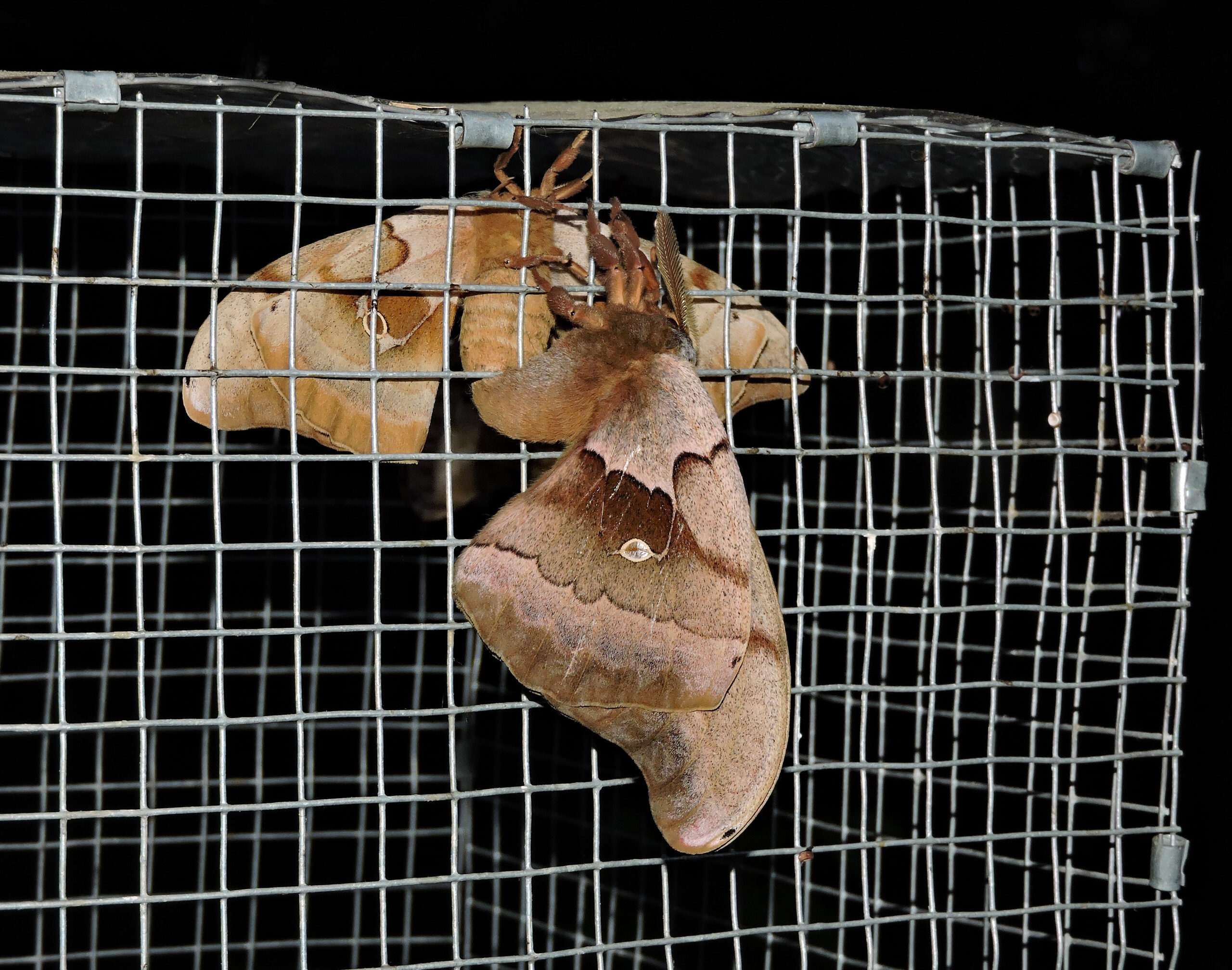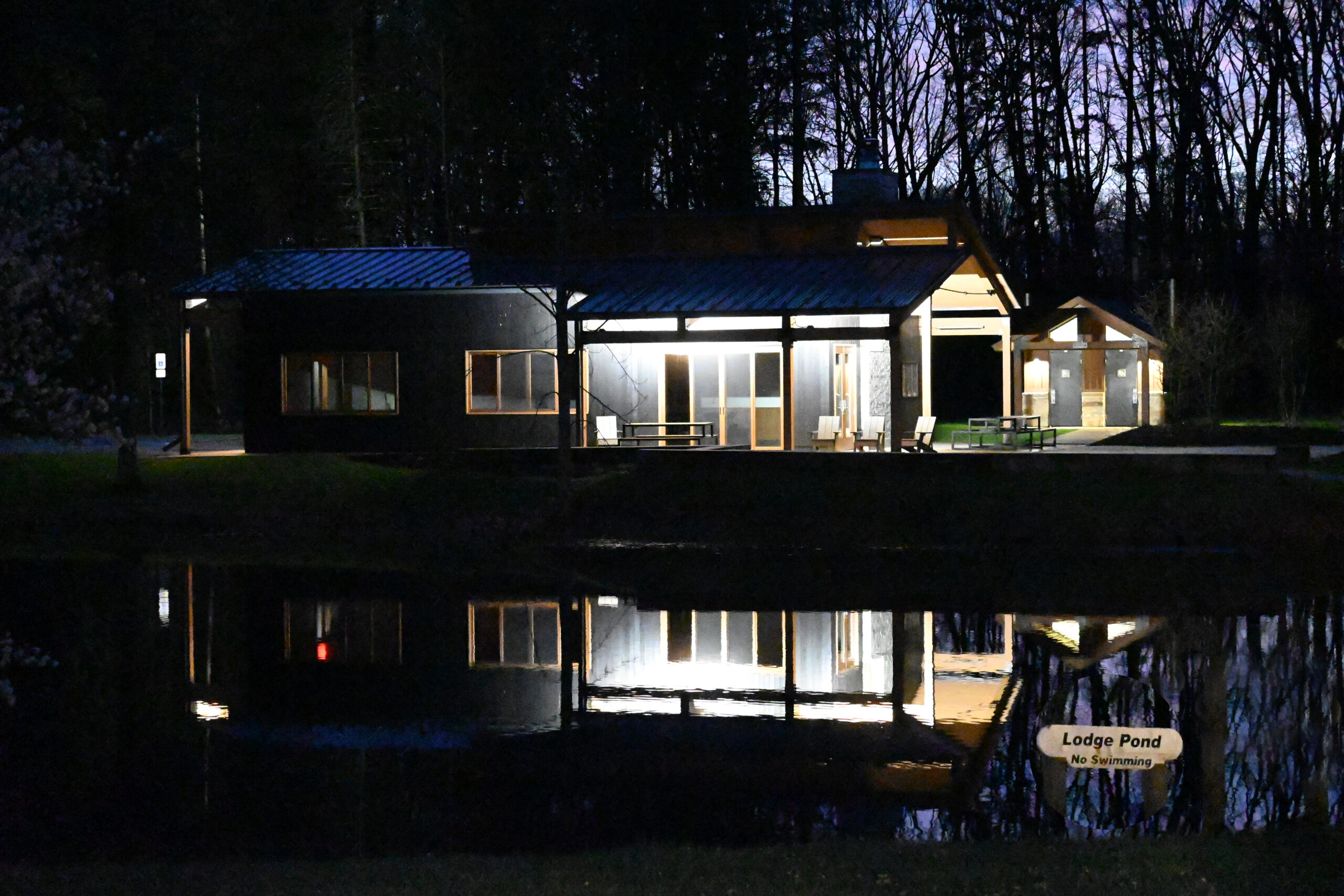
I’ve been reading more and more about how artificial lights are negatively affecting the behavior of wildlife around the world, especially nocturnal insects. Reading is one thing, but until reality smacks you in the face, it’s difficult to truly comprehend the negative impacts.
My life revolves around insects, particularly moths, which I have been rearing since childhood. I suppose when you are intimate with something for this long, you can’t help but notice the subtle changes that are occurring over time. I am witnessing not only changes in moth populations, but also in the behaviors and patterns of many moth species, none of which are positive. One incident in particular, which occurred several years ago, made such an impression on me that I can’t help but think about it nearly every night during the spring and summer when moths are on the wing.
Changes in behavior

It happened one day in June, a lovely female Polyphemus moth that I raised from an egg the previous year, emerged from her cocoon. She spent the day on the side of the cage, drying her wings. As evening arrived, I placed her in a different cage with 1/2-inch wire mesh — this size allows for the wild males to fly in and mate with the females right through the holes in the wire.
When darkness falls, female moths emit particles of scent known as pheromones, which travel as invisible trails through the air, out over the countryside. Pheromones can travel for miles, alerting male moths that excitedly follow this stream of chemicals in, from up to 5 miles away to reach the awaiting female. It’s a huge risk for a moth to fly so far in search of a mate, and it is a race to beat all the competing males also responding to her “call.” Once a male finds the advertising female, he immediately joins abdomens in a union of fertilization that will last around 16 hours. Once the pair is “coupled,” the pheromones are turned off and the other males that have responded head back out in search of another available mate, calling from a different location.
On the night I set my female Polyphemus out in her “breeding cage,” I also turned on my moth light. This is a 15-watt ultraviolet bulb that is often used by scientists for collecting/surveying nocturnal insects. This process, known as black lighting, can often result in attracting thousands of insects, many of which are moths. I turned my light on once a week in an effort to scrutinize which moth species are active and to assess their populations. We have a wrap-around porch, so the cage holding the female Polyphemus was on the front porch, while the UV light was around the corner, at the end of the house.
When morning arrived, I anxiously opened the front door, expecting to see my female Polyphemus coupled with a mate. After all, it was prime Polyphemus flight time. Yet, there she sat, all alone on the side of the cage where I had left her the night before. I was flummoxed. How could this be?
Remembering my black lighting station, I headed down the porch, rounded the corner and was met by an incredible scene. I slowly and deliberately counted 17 male Polyphemus moths resting quietly around the light on the side of the house. It took a minute or two for my mind to register the meaning of this scenario.
All night long, my beautiful female Polyphemus emitted pheromones that traveled far and wide. Males picked up her scent and followed it in. Yet when they arrived at her location, the pull of the ultraviolet light was so overwhelming, it drew the males off course, distracting them from their original mission. As each male arrived and headed toward the light, the female continued to call, attracting more and more males, each one repeatedly diverted by the ultraviolet rays upon arrival. Not one single male of the 17 individuals was more attracted to the pheromones of a mate than to the light. I was mortified. What had I done?
Light pollution

This is just one example of how light pollution is affecting insects. As the human population continues to explode, more and more artificial lights are being installed, eliminating the darkness. Parking lots in cities, security lights in neighborhoods, sadly, even park districts illuminate their buildings, which are usually located on preserved land in prime moth habitat.
Moths play a critical role in pollination, and artificial lights are now keeping them from performing their nocturnal duties. As darkness falls, insects venture forth, finding themselves in an unnatural environment illuminated by artificial lights. This in turn causes them to become disoriented, expending more energy to survive, thus reducing their fitness. Not only do lights distract male moths from finding mates, but the unnatural concentration of moths and other insects around light sources exposes them to predators such as bats or birds, which exploit the easy food source.
Ever since the Polyphemus moth incident, I have been much more mindful of my moth lighting station. I never turn the light on when I have a female moth emitting pheromones, and when I do use it, I never leave it on for more than a few hours, turning it off around 2 a.m., releasing the insects that responded from their artificial hold. Instead of turning my light on once a week, I now only survey twice a month.
We can all be mindful and do our part to give moths and other insects a reprieve. Turn off porch lights, install only motion-detection security lights, but most importantly, simply turn outdoor lights off at bedtime.
As the insect population continues to plummet globally, we are beginning to feel the effects. Fewer insects also mean fewer birds and fewer mammals. Insects are an invaluable component of the chain of life, and entire ecosystems are now at risk. A newly emerged female Polyphemus moth “calls out” to her male suitors, hoping for a union that will allow her to carry on her species. Sadly, there may soon come a day when she will go untouched and unnoticed, and we can only blame ourselves.












Thank you for sharing; hopefully this will prevent others from having a similar result!